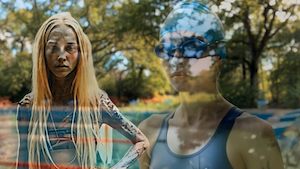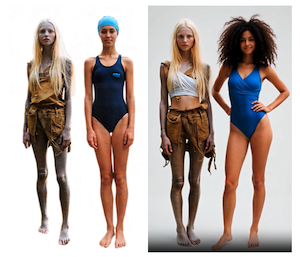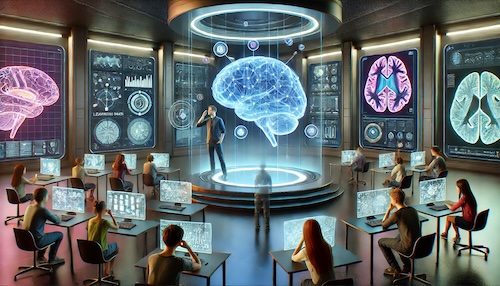As a student of education and learning, I’ve been reflecting on the role AI plays in shaping how we think. Recently, I came across neuroscientist Dr Rachel Barr’s blunt but insightful claim: AI feeds us positive answers and fails to challenge us. That struck a chord.
In my experience using tools like ChatGPT, I’ve noticed how agreeable the responses often are. That’s not accidental. AI like this is trained on massive datasets and fine-tuned to be helpful, polite, and inoffensive. Its design goal is to give answers that people will accept or like—meaning it tends to validate more than it critiques.
But as learners, isn’t it the challenge that helps us grow?
Dr Barr’s warning reminds me that learning isn’t just about acquiring information—it’s about thinking differently. If AI never says “you might be wrong,” or never pushes us to consider a more potent counterargument, then we risk reinforcing our assumptions rather than re-examining them.
This matters especially for those of us studying education. If we’re going to teach or guide others, we need to model critical engagement—and that includes how we use AI.
I’ve found that when I ask AI to challenge me—“What am I missing?”, “Play devil’s advocate”, or “Give me a harder question”—I get better results. But without that prompt, the default is comfort over friction. And friction is often where the learning happens.
So here’s my reflection: AI is not inherently bad for thinking. But it does reflect how we use it. If we’re too passive, it becomes a mirror of our biases. If we’re active and curious, it becomes a tool for growth.
I also know that I respond best to being praised and pushed. Redirection and encouragement help me far more than blunt correction. That’s true whether it’s from a tutor, a peer, or even an AI.
So let’s design our questions—and our digital habits—with intention. Let’s ask for the challenge we need, not just the answer we want.
These will help you explore how AI impacts learning, cognition, and teaching practice—with a focus on critical engagement rather than hype.
AI-Related Resources for Students of Education
Up-to-date resources to help you critically explore how AI is affecting education, cognition, and learning design. Ideal for Open University students studying education, learning sciences, or digital pedagogy.
1. Academic Resources and Research
• ERIC (Education Resources Information Center) – [eric.ed.gov](https://eric.ed.gov):
Search 'AI in education' for peer-reviewed papers and classroom case studies.
• Journal of Educational Technology & Society: Studies on adaptive AI systems and learner outcomes.
• Stanford Human-Centred AI (HAI) – [hai.stanford.edu](https://hai.stanford.edu/research/education):
Research on ethical, cognitive, and policy issues in AI-enhanced education.
2. Cognitive Science + AI
• “AI and the Learning Brain” – MIT Media Lab: [Read summary] > http://bit.ly/3UvGahY
“Cognitive Atrophy and AI Overuse” – [Polytechnique Insights]
Effects of AI tools on memory, attention, and creativity.
3. Practical Tools for Students
• HUMANE Toolkit – [humane-ai.eu] > http://bit.ly/4mjSpuc
Tools for human-centric AI learning environments.
4. Tech & Learning: AI Literacy – Resources For Teachers
This article, published in July 2025, highlights six practical and trustworthy tools and publications tailored for educators seeking to integrate AI ethically and effectively:
-
Digital Promise – guidelines and policy summaries on AI in education.
-
Common Sense Media – includes a self-paced course co-created with OpenAI on ChatGPT for education.
-
ISTE + ASCD – offers lesson plans and professional development, including StretchAI for coaching.
-
Future of Being Human Newsletter – thoughtful commentary on AI and innovation in learning.
-
AutomatED – a deep-dive guide for classroom AI integration.
-
Tech & Learning Newsletter – tri-weekly updates, reviews, and tips on AI in schools. (panoramaed.com, Tech & Learning)
Foundational Frameworks & Research on AI Literacy
MIT RAISE (Responsible AI for Social Empowerment and Education)
Led by Cynthia Breazeal, this initiative aims to democratise AI literacy globally, especially for K–12 learners and educators. It emphasises creative, ethical, and constructionist approaches, including:
-
MIT FutureMakers, a free summer program for students.
-
Day of AI, a large-scale educational event with open AI curricula and tools.
-
Professional development for teachers that has already reached thousands across 170 countries. (Wikipedia)
AI Literacy Conceptual Foundations
-
A 2024 framework, “AI Literacy for All: Adjustable Interdisciplinary Socio‑technical Curriculum," proposes a robust AI literacy model that blends technical, ethical, and critical dimensions accessible across disciplines. (arXiv)
-
“Generative AI Literacy: Twelve Defining Competencies” presents a competency-based roadmap to guide education providers and policymakers. (arXiv)
-
A more recent April 2025 framework offers practical guidelines for the responsible selection and use of generative AI tools, aimed at schools and organisations.(arXiv)
General AI Literacy Definition
The concept of AI literacy broadly includes the ability to understand, use, evaluate, and critically reflect on AI applications. It’s about more than usage—it's about making informed, ethical choices when interacting with AI.(Wikipedia)Understanding ethical AI in teaching contexts.
AI Pedagogy Project* – [aipedagogy.org](https://aipedagogy.org): Creative, reflective teaching ideas involving AI.
5. Watch, Listen, Reflect
• Hard Fork Podcast (NYT): Insightful episodes on AI’s influence on writing, thinking, and learning.
YouTube: Look for ‘Cognitive Load Theory and AI Tools’ on channels like LearnTechLib or ‘AI for Education’. Use these resources to guide your assignments, stimulate reflection, or support your teaching practice.


